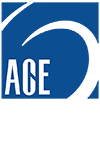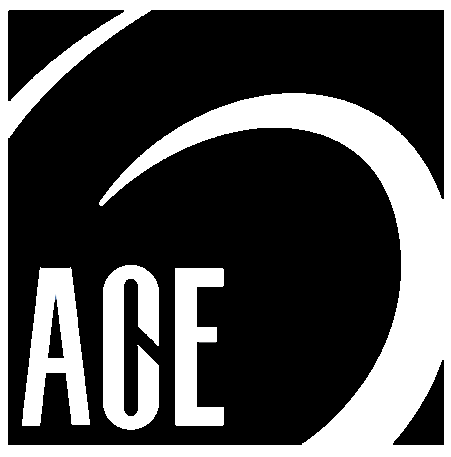

ANALYSIS OF ISSUING MULTIPLE TAX IDENTIFICATION NUMBERS (TIN) IN AFGHANISTAN
In the latest analytical article published by PriSEC (the Executive Committee on Private Sector Development) in Afghanistan, Ishfaq Shah argues that utilizing multiple Tax Identification Numbers (TIN) in Afghanistan is not best practice, potentially resulting in lost tax revenue for the Afghan government and more complicated procedures for business owners. He argues that, following the example of countries such as the U.K. and U.S., a single TIN should be issued for an individual (Natural Person) with multiple sources of income. Furthermore, a personal TIN (for employment income) should be the same as her or his TIN for the business (owner/shareholder/partner). For more details, see the article below.
Tax Identification Numbers have different names in different countries around the world (for example, in the UK, it is known as Unique Taxpayer Reference (UTR). However, it is considered international best practice that a tax resident in any country should be entitled to only one Tax Identification Number (TIN). In Afghanistan, a Taxpayer Identification Number (TIN) is a unique ten-digit number used to identify a specific taxpayer. A taxpayer is defined as an individual (natural person) or legal entity (legal person) who has an obligation to report income, expenses, or business activities and liable for tax payment to the government. The purpose of the TIN is twofold: it (1) assures proper crediting of tax against taxpayer account in the Ministry of Finance, and (2) it contributes to more efficient tax administration. Furthermore, corresponding to international best practice, according to the Afghanistan Income Tax Law 2009, Article 86, each Afghan taxpayer (Natural Person) must have only one TIN for reporting to the Ministry of Finance (MOF).
In support of each Afghan taxpayer only having one TIN, according to Article 87(2) of the Afghanistan Income Tax Law, an individual who derives wage income that is subject to income tax withholding in accordance with the provisions of this Law shall not file a tax return unless the person receives wages from two or more employers or has other income in addition to their wage income. The tax withheld from wages or salaries under the provisions of the Law shall not be refundable.
Based on above Article, we understand that an individual often run multiple business in the form of “sole trading” and/or has multiple sources of income.[1] However, when reporting to the MOF a taxpayer should report and pay their taxes under one TIN.[2] This is further supported by Article 41(1) of the Income Tax Law 2009, which states that a taxpayer is allowed to report Multiple business performance (Profit & Loss) combined under one AITR, to ensure that the MOF does not suspect the individual to be attempting tax evasion.
CHALLENGES OF THE EXISTING PRACTICE OF MULTIPLE TIN ISSUANCE BY MINISTRY OF FINANCE (MOF) – (Single TIN VS Multiple TINs for Employment and Self-Employment)
Contrary to Afghan Income Tax Law, international best practice, and the conventions of International Financial Reporting Standards (IFRS) and International Accounting Standards (IAS), the current practice of the Ministry of Finance (MOF) representative at Afghanistan Central Business Registry (ACBR) is to issue multiple TINs to sole proprietor (ENFIRADI) business license holders.[3] This results in one individual (Natural Person) possessing multiple TINs.
Because all taxes earned through business licenses are paid by individuals (Natural Persons) or companies (Legal Persons) under their assigned TIN, one person with multiple businesses should retain only one TIN despite holding multiple business licenses. This means if a businessperson declares his/her business registration type as sole trading “ENFIRADI” in the SHUHRAT FORM, which is also known as “Article of Association” only one TIN should be issued by the MOF to that businessperson, regardless of the number of business licenses s/he holds.
The current practice by MOF of issuing a separate TINs for each business license registered causes a number of difficulties to both taxpayers and the government in terms of tax revenue collection and administration. These difficulties will be illustrated with the help of a simple case study outlined below.
CASE STUDY
Mr. RAYAN is an entrepreneur and tax resident in Afghanistan. Mr. RAYAN registers the following sole trading (ENFIRADI) business licensees with ACBR, Trading As (T/A):
- RAYAN Business Consultancy
- RAYAN Restaurant and Catering
- RAYAN Procurement & Logistics
In order to further help our understanding, we also assume that Mr. RAYAN has a part time employment as a lecturer in one of the Universities in Kabul. This assumption is purposely included here to understand how self-employment and employment income is taxed according to law.
The case study will portray two possible scenarios, (1) Self-Employment and Employment with single TIN (2) Self-Employment Income and Employment with multiple TINs. In order to understand the case study, the following additional facts about the Afghan tax system should be noted:
- The tax law allows taxpayers to claim up to 60,000 AFN in personal allowances each tax year. This practice is compliant with income tax laws worldwide.
- Self-employment income is calculated according to below tax bandwidths, depicted for 1 year in the first table and 1 month in the second table:
One Year Self-Employment Tax Brackets
| Income more than | Income not more than | Tax |
| 0 | 60,000 | 0% |
| 60,000 | 150,000 | 2% over amount of 60,000 |
| 150,000 | 1,200,000 | 1,800 AFN + 10% over 150,000 |
| 1,200,000 | – | 106,800 + 20% over 1,200,000 |
One Month Self-Employment Tax Brackets
| Income more than | Income not more than | Tax |
| 0 | 5,000 | 0% |
| 5,001 | 12,500 | 2% over 5,000 |
| 12,501 | 100,000 | 150 AFN + 10% over 12,500 |
| 100,001 | – | 8,900 + 20% over 100,000 |
Scenario 1: Single TIN for Self-Employment and Employment
Self-Employment Income
The taxable profits from each of Mr. RAYAN’s business ventures in 2019 (1398) are as below. All amounts reported here are in AFN.
RAYAN Business Consultancy 60,000
RAYAN Restaurant and Catering 60,000
RAYAN Procurement & Logistics 60,000
Total Income subject to Income Tax 180,000
Income tax will be calculated as below:
| Income Amount | Tax |
| 60,000 @ 0% | 0 (Annual Personal Allowances) |
| 90,000 (150,000 – 60,000) @ 2% | 1,800 |
| 30,000 (180,000 (Max profit) – 150,000) @ 10% | 3,000 |
| Total Income tax payable by Mr. RAYAN | 4,800 |
Employment Income
In addition to his business ventures, Mr. RAYAN receives an employment offer from one of the Universities in Kabul as part time lecturer and he accepts it. For this position, Mr. RAYAN will be paid through monthly payroll and according to Afghanistan Income Tax Law 2009, Article 58, his employer is required to withhold wage withholding tax from his gross salary. His employer (the University) requires a TIN for the wage withholding tax payment and reporting to the MOF. Therefore, Mr. RAYAN will provide the same TIN to the University that was issued by MOF/ACBR for his businesses. He is not required to receive another new TIN for his employment at the University.
Assuming Mr. RAYAN is paid 15,000/month, his one-month payroll will be as below:
| Income Amount | Tax |
| 5,000 @ 0% | 0 (Monthly Personal Allowances) |
| 7,500 (12,500 – 5,000) @ 2% | 150 |
| 2,500 (15,000 (Max salary) – 12,500) @ 10% | 250 |
| Total Payroll tax for one month | 400 |
Mr. RAYAN pays income tax through payroll in one tax year 4,800 (400×12).
When Mr. RAYAN has one AITR to the MOF at the end of the tax year, Mr. RAYAN will declare it as below:
Self-Employment Income (60,000+60,000+60,000) 180,000
Employment Income (15,000X12) 180,000
Total Income subject to income tax 360,000
The income tax calculation will be as below:
| Income Amount | Tax |
| 60,000 @ 0% | 0 (Annual Personal Allowances) |
| 90,000 (150,000 – 60,000) @ 2% | 1,800 |
| 210,000 (360,000 (Max profit) – 150,000) @ 10% | 21,000 |
| Total Income tax | 22,800 |
| Less: Income tax paid through Payroll | 4,800 |
| Income tax payable end of 2019 (1398) | 18,000 |
Scenario 2: Multiple TINs for Self-Employment and Employment
Self-Employment Income
Now, assuming Mr. RAYAN (as a sole trader) has three different TINs for each of his business ventures and reports three AITRs to MOF, his income tax calculation would be as follows:
RAYAN Business Consultancy
60,000 @ 0% = 0 AFN (Annual Personal Allowance)
RAYAN Restaurant and Catering:
60,000 @ 0% = 0 AFN (Annual Personal Allowance)
RAYAN Procurement & Logistics:
60,000 @ 0% = 0 AFN (Annual Personal Allowance)
In this calculation Mr. RAYAN is not paying income tax to the MOF because he is claiming his Annual Personal Allowance (60,000 AFN per Natural person/entity) three times in a tax year through each of his 3 business ventures.
Employment Income
Payroll for one-month gross salary of 15,000:
| Income Amount | Tax |
| 5,000 @ 0% | 0 (Monthly Personal Allowances) |
| 7,500 (12,500 – 5,000) @ 2% | 150 |
| 2,500 (15,000 (Max salary) – 12,500) @ 10% | 250 |
| Total Payroll tax for one month | 400 |
| Total Payroll tax for one year | 4,800 (400 x 12) |
Analytical Comparison of Scenario 1 and Scenario 2
Scenario 1: Total amount of tax paid by Mr. RAYAN in 2019 (1398)
Self-Employment + Employment 18,000
Number of Annual Income Tax Returns (AITR) Filed ONE
Scenario 2: Total amount of tax paid amount by Mr. RAYAN in 2019 (1398)
Self-Employment + Employment 4,800
Number of Annual Income Tax Returns (AITR) Filed THREE
Loss of tax revenue to the government of Afghanistan
between Scenario 1 (18,000) and Scenario 2 (4,800) 13,200
As becomes clear from the above comparison of the two scenarios, the issuance of multiple TINs for one natural person or entity causes both a loss of tax revenue for the government and increases administration burden for the tax authorities and taxpayers by having to file multiple tax returns (AITRs).
RECOMMENDATIONS
Based on our analysis of international best practice and the current practice in Afghanistan, we recommend the following:
- TINs shall be issued by one centralized government authority through an integrated system. For example, business registration office(s), in the capital or provinces, must be connected with the MOF SIGTAS system to monitor and control the issuance of TINs.
- If an individual has already obtained one TIN for employment or business in the past and would like to register a new “sole trading” business, that individual shall use the same previously issued TIN for their new “sole trading” business.
- Sole trading businesses should be taxed according to Income Tax (IT) bandwidths, as stated above, instead of a 20% Corporate Tax (CT) flat rate.
- Individuals with more than one ACBR business license (Sole Proprietor Form) should report all business activities through one Annual Income Tax Return (AITR) FORM – EZHARNAMMA. This will reduce the numbers of registered taxpayer’s files within tax offices (LTO, MTO, STO). In addition, those taxpayers who suffer withholding taxes (Rent, Dividend, Interest) will be able to claim refunds or settle the tax credit against tax liabilities at the end of the year.
- Taxpayers having “Employment Income” as well as “Self-Employment Income” must have only one TIN in order to avoid claiming more than one “Annual Personal Allowance” correctly applying income tax brackets on their “Total Taxable Profits”. An employee pays tax through payroll – PAYE (Pay As You Earn) system. Therefore, tax paid through PAYE shall be adjustable against total income tax liability end of the year in the AITR.
- We understand that it will not be an easy task for the MOF to link multiple TINs back to a single TIN for an individual taxpayer, however we believe that the SIGTAS system can be utilized to resolve this issue. SIGTAS has a comprehensive module which can retrieve taxpayers with multiple TINs.
- Once the issuance of electronic ID cards (TAZKIRA) process is completed, national ID card numbers should be assigned as unique tax identification numbers to every citizen and tax resident in Afghanistan. This will help to integrate the national database with the list of active taxpayers.
- Issuance of multiple TINs to a sole trader will have repercussions after the introduction of Value Added Tax (VAT). VAT is administered through a VAT Registration Number. We therefore recommend that once a taxpayer qualifies for VAT registration (Compulsory or Volunteer), s/he will be required by law to register for a VAT Number. A VAT number should be issued based on the existing TIN of the business. This is recommended because if one sole proprietor has multiple TINs, then it will be difficult for the taxpayer as well as for the MOF to administer multiple quarterly VAT filings. In addition, the administration of “Exempt”, “Zero Rated”, “Reduced Rated”, and “Standard Rated” goods and supplies will be a challenge.
- We suggest that tax awareness raising and education initiatives are undertaken to supplement any regulatory level changes in TIN issuance to ensure Afghan taxpayers understand the tax system and the merits and reasons behind having only one TIN.
CONCLUSION
As detailed in this article, the current system of issuing multiple TINs has significant negative impacts on both public and private stakeholders in Afghanistan. In order to improve government revenues, clarify private sector tax payment requirements, strengthen and streamline the tax system overall; this issue should be addressed as soon as possible as outlined in the recommendation section above.
[1] Multiple sources of business income are in the same legal category of multiple sources of employment income.
[2] Taxpayers are, however, required to keep accurate records of all her/his business activities (income & expenses) should the MOF require detailed supporting documents during the Annual Income Tax Return (AITR)/EZHARNAMMA review process.
[3] According to the Afghanistan Income Tax Law 2009, Article 86, each Afghan taxpayer (Natural Person) must have only one TIN for reporting to the Ministry of Finance (MOF). The Afghanistan Income Tax Manual addresses and defines concepts of IFRS and IAS, which are set by the International Accounting Standard Board (IASB). The IASB is solely responsible for issuance of IFRS and IAS. Until Afghanistan develops its own accounting standards, the Afghanistan Revenue Department (ARD) shall accept the use of terminology and standards set forth by the IASB. As per ACBR business registration compliance, a sole proprietor (ENFIRADI) business registration application is different than a Limited Liability Company LLC, (SHERKAT E SAHAMI).
Author
Download PDF Download
Source:
TITLE
Analysis of Issuing Multiple Tax Identification Numbers (TIN) in Afghanistan



 Muhammad Ishfaq Shah
Muhammad Ishfaq Shah